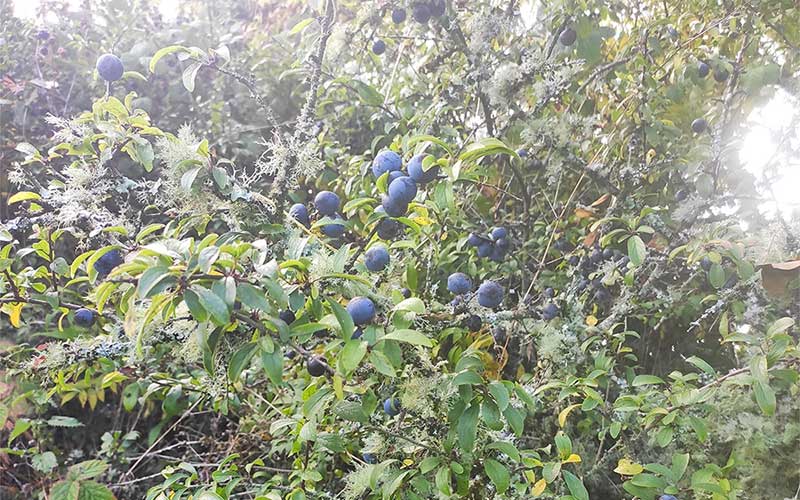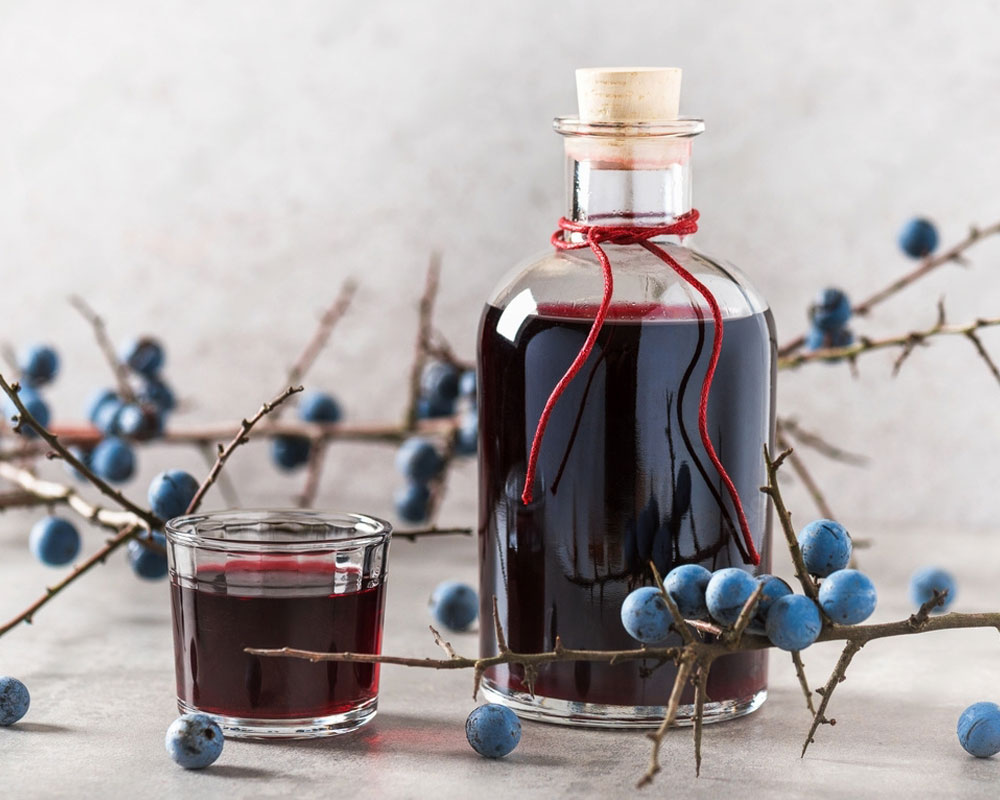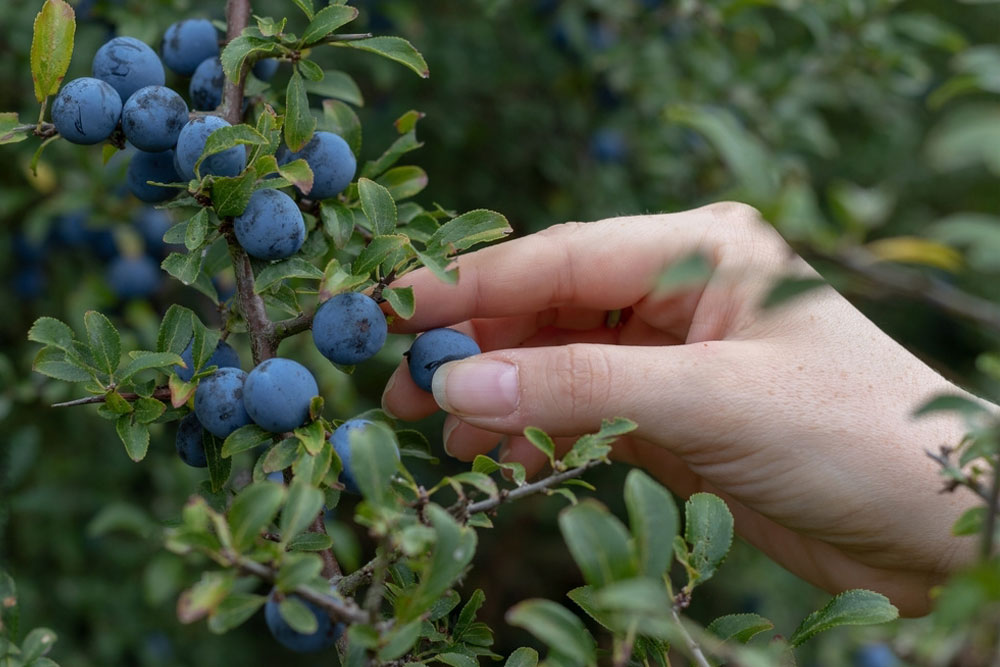Unveiling the Tantalizing Treat of Sloes
Venture into the wild embrace of the hedgerows in and around Marblehill. There, amidst a tangle of thorns, you might encounter a hidden gem: the sloe (Prunus spinosa). Often overlooked or mistaken for a simple blackthorn bush, the sloe offers a bounty of flavour waiting to be discovered. From its historical significance to its potential in the kitchen, the humble sloe is a testament to the hedgerow’s hidden treasures.
A Thorny Treasure: Identifying the Sloe
The sloe is a shrub that thrives in untamed landscapes. Keep an eye out for a tangle of branches adorned with sharp thorns—a natural defence against grazing animals. In spring, the bare branches erupt in a profusion of delicate white flowers, a beautiful contrast to the winter’s starkness. As summer progresses, these flowers transform into tiny green fruits. By late fall, these green spheres mature into the jewel of the sloe bush—the sloe berry. A deep, inky purple with a dusting of waxy bloom, the sloe berry might appear unassuming at first glance. But don’t be fooled—below its astringent exterior lies a potential for culinary delights.

A Taste of History: The Folklore and Tradition of Sloes
The sloe has been a part of human history for centuries. Evidence suggests sloes were foraged and consumed as far back as the Stone Age. Folklore and legends abound, with some cultures associating the sloe with protection and good fortune. In Europe, sloes have a long tradition of being used in alcoholic beverages. Sloe gin, a liqueur made by infusing sloes in gin, is a cherished winter tipple, offering a taste of the hedgerow in a glass.
Taming the Tartness: How to Use Sloes
Sloes are notoriously tart when eaten raw. However, with a little preparation, they can be transformed into delicious treats.

Here are some ways to enjoy the versatile sloe:
- Sloes Gin: Perhaps the most well-known use of sloes, sloe gin is a delightful homemade liqueur with a complex flavour profile. The process involves steeping sloes in gin with sugar, allowing the flavours to meld over time.
- Sloe Jams and Jellies: For a taste of the hedgerow on your toast, consider making sloe jams or jellies. The tartness of the sloes is perfectly balanced by sugar, creating a spread that pairs wonderfully with cheese or scones.
- Sloe Crumble: Sloes can be incorporated into crumbles for a unique and delicious dessert. The tartness of the sloes cuts through the sweetness of the crumble topping, creating a delightful contrast in textures and flavours.
- Sloe Chutney: For a savoury twist, sloes can be used to make chutneys that complement meats and cheeses. The tartness of the sloes adds a depth of flavour and complexity to savoury dishes.
A Word of Caution: It’s important to harvest sloes after the first frost. This process helps to break down the astringency of the fruit, making it more palatable. Additionally, only forage from unsprayed areas and be mindful of the thorns when harvesting.
A Sustainable Harvest: Protecting the Sloe Bushes at Marblehill
If you choose to forage for sloes at Marblehill, remember to be a responsible harvester. Only take what you need, leaving plenty behind for the resident wildlife and for the continued growth of these hedgerow gems. Consider it a privilege to connect with the natural world and to experience the unique flavours the sloe has to offer.

Beyond the Bramble: A New Appreciation for the Sloe
The next time you explore the hedgerows of Marblehill, keep an eye out for the unassuming sloe bush. With its thorny exterior and hidden bounty, the sloe is a reminder that beauty and flavour can often be found in the most unexpected places. So, take a moment to appreciate the history and folklore surrounding the sloe, and perhaps even consider trying your hand at a sloe gin recipe or a delicious sloe jam. The sloe might be a humble hedgerow fruit, but it offers a taste of wildness, a connection to tradition, and a reminder of the potential for culinary discovery that awaits just beyond the garden gate.






